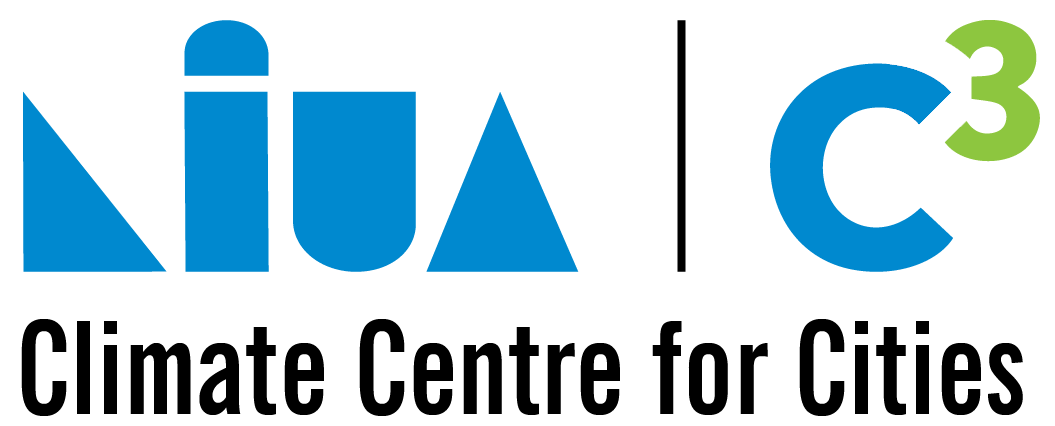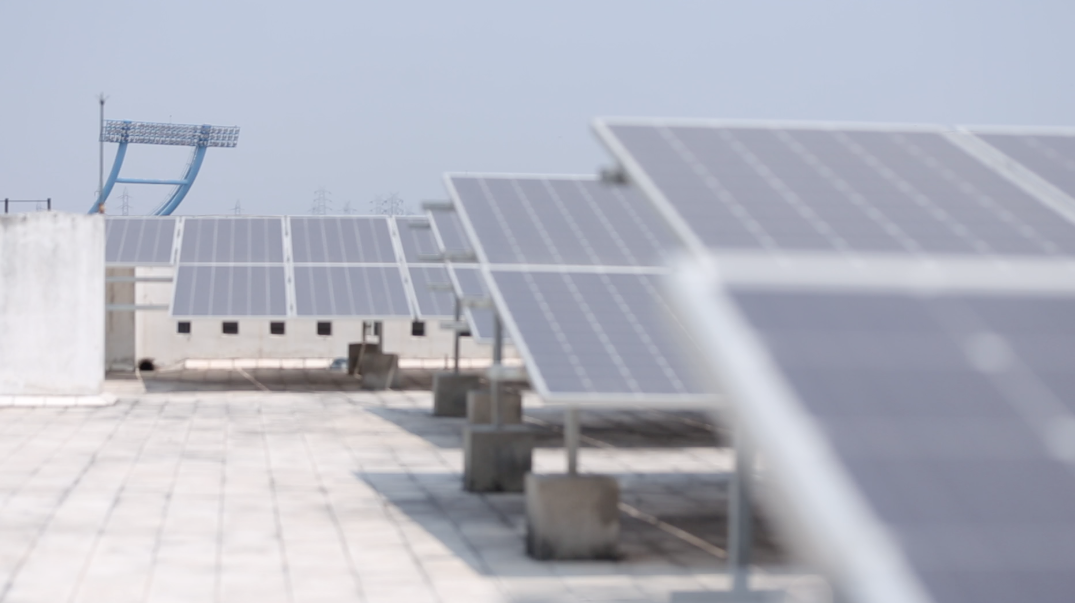Benefits of Rooftop Solar for Municipal Buildings in India
Published On:
Wednesday, December 9, 2020
If there’s one word to describe India’s goal of achieving 100 gigawatts (GW) of solar energy installation by 2022, it is “ambitious.” Of this, 40 GW need to come from rooftop solar (RTS) systems, which are installed on building premises and rooftops. The Government of India (GoI) has been making strides in readying the market, policy, and regulatory environment to encourage greater RTS adoption. However, only 15 percent (6 GW) of the 40 GW target has been installed as of June 2020.
The launch of phase II of the Climate Smart Cities Assessment Framework, therefore, is extremely opportune and points to the central role that local governments can take in leading the energy transition, including by adopting more RTS for government buildings. In this blog, we describe the benefits to deploying rooftop solar, the pathways for procurement, and how Rocky Mountain Institute’s (RMI) technical support to C-Cube can facilitate these projects.
Benefits for Local Governments
Earlier this year, GoI asked all states and union territories to identify cities that will source their entire electricity consumption through RTS, in order to boost domestic solar manufacturing and contribute to state and national solar targets. The range of benefits that can be reaped include:
-
Increase in local jobs: Increased deployment of RTS solar could help India begin to recover the some of the more than 100 million jobs lost due to COVID-19. Meeting India’s 40 MW rooftop solar goal could create nearly 1 million job-years.
-
Price stability and resiliency: RTS can offer long-term price stability for municipal governments as well as cost savings. According to data on approximately 50 ministries/departments collated by the Ministry of New and Renewable Energy (MNRE), government buildings have a rooftop solar potential of nearly 5.9 GW, which could deliver annual savings of nearly INR 830 crores (approximately US$100 million). As of June 2020, only 776 MW, or about 13 percent, of this potential has been realized. As technology costs continue to decline, RTS could potentially be paired with behind-the-meter battery energy storage as a resilience solution, offering a cost-comparable noise- and air-pollution-free alternative to back-up diesel generators (in 2019 India’s diesel generator market was slightly over US$1 billion, approximately INR 7,000 crores).
-
Avail government incentives: MNRE’s “achievement-linked incentives” for the government sector provide capital subsidies for RTS installations that increase as the government entities make progress towards predetermined goals. These incentives are available for up to 25 percent of benchmark cost for general category states and up to 60 percent of the benchmark cost for special category states.
-
Provide benefits to the surrounding community: As RTS proliferates, utilities must upgrade local distribution grid infrastructure to handle interconnection and the bidirectional power flows required for net metering. These upgrades will increase reliability for all customers served by the upgraded lines.
Benefits for DISCOMs
Power distribution companies (DISCOMs) are crucial to achieving 40 GW of RTS by 2020. They provide connections for RTS installation on building premises, manage approval and implementation processes, and run all billing. DISCOMs should capitalize on the opportunity and need for expanding RTS due to the following benefits:
-
Increase efficiency gains: Due to the co-location of generation and consumption, RTS reduces transmission and distribution losses and network augmentation costs for DISCOMs. These systems also help ease the day-time peak load—which matches the diurnal peak of solar generation and would otherwise be met by expensive, polluting fossil generation. This peak co-incidence will become all the more important with the increasing penetration of air conditioning, which is expected to contribute 45 percent in the peak electricity load by 2050, up from about 10 percent today.
-
Avail government incentives: Through the Grid-Connected Rooftop Solar Program Phase II, DISCOMs can take advantage of progressive incentives—up to 10 percent benchmark cost— for installing additional RTS capacity over the end of the previous financial year’s capacity in all sectors. This is limited to the first 18 GW of solar connected via DISCOMs in the country, so there is incentive to act quickly.
-
Progress towards RPO requirements: RTS can help DISCOMs fulfill their renewable purchase obligation (RPO) under which 10.5 percent of the electricity procured needs to come from solar energy by 2022. Currently, most states are lagging in their achievement towards this goal.
Barriers and Enablers
It’s clear that RTS can provide benefits for multiple stakeholders. However, the development of the following two factors will play a key role in ensuring that India can scale and accelerate the adoption of RTS:
-
Billing mechanisms such as net metering can make RTS more financially attractive for consumers since these mechanisms allow consumers to receive compensation for feeding any excess solar energy generated back to the grid. Internationally, net-metering regulations have increased RTS adoption by up to 50 percent. On the other hand, DISCOMs favour gross metering since they believe it helps them mitigate any financial implications related to lost revenue. The implementation of net metering has varied greatly between states and led to uncertainty and delays. Rationalizing metering regulations would encourage stakeholders including customers, developers, financiers, and DISCOMs to accelerate RTS deployment.
-
The two most conspicuous business models available to scale RTS are the operational expenditure (opex) model and the capital expenditure (capex) model. With the capex model, customers buy the system and save money through reduced utility bills over time, with payback periods ranging from 5 to 12 years (depending on project size and customer’s current electricity rate). With the opex model, a third party finances and owns the system, and the consumer only pays for the power as it is produced—typically at a lower cost than DISCOM-supplied power, enabling savings from day one.
The past four years have seen the market share of the opex model rise from 13 percent to 39 percent; its popularity stemming from the ability to avoid both capital investment and asset maintenance. However, access to financing remains difficult; many financial institutions lack the experience and knowledge to accurately assess risks and returns of these investments. Developers can also struggle to aggregate individual installations to achieve the scale sufficient to secure attractive financing terms. Municipal corporations can increase access to financing by raising municipal bonds to support multiple local developers, which will also continue to demonstrate the stability of these loans to financial institutions.
What Lies Ahead
Given the slew of factors that need consideration, many local governments and municipal corporations may be hampered by limited technical, regulatory, and market knowledge, as well as insufficient time to invest in project development. To bridge this gap and accelerate deployment of RTS, Rocky Mountain Institute (RMI) will be providing support to C-Cube and participating cities in the form of knowledge management, capacity-building, and ongoing handholding.
Specifically, RMI will be running a year-long cohort for cities ready to pursue RTS projects. This model, in which cities are focused on similar projects and timelines, can rapidly deliver impact at scale. The cohort will use the approach RMI has taken with the American Cities Climate Challenge, where its last RTS cohort led to the deployment of 29 MW (eight times increase) across 98 buildings in 15 cities. The format enables participants to derive the most value from technical assistance resources and to learn from each other in real time. It also balances essential collaboration with healthy competition.
The cohort will dive into each step of the RTS procurement process, from evaluating potential roof space to tender completion, in regularly scheduled virtual workshops. During these workshops, RMI will also provide and explain the tools and resources available to support techno-economic evaluations, project approvals, and more.
To learn more about the procurement process for RTS and next steps for RMI’s support, we are offering a webinar on Dec 17th at 4 p.m. IST, through the C-Cube webinar platform. More details will be shared in the coming weeks on C-Cube's Twitter handle @C3_NIUA.
Contact Us
1st and 2nd Floor, National Institute of Urban Affairs
India Habitat Centre Lodhi Road New Delhi-110003
Please Call Help Desk at 011-411-86699
Monday - Friday, 9:00 AM - 5:00 PM
Please write to us at c-cube@niua.org







Post a Comment